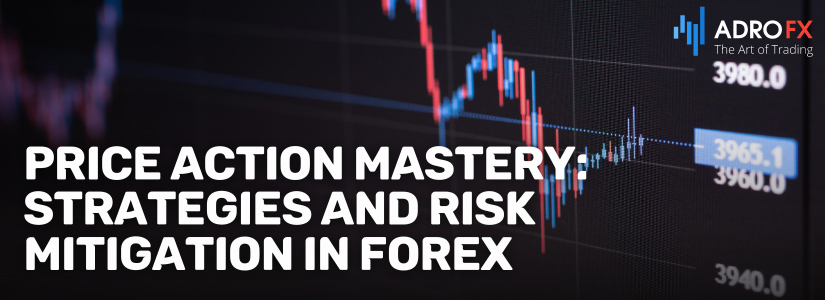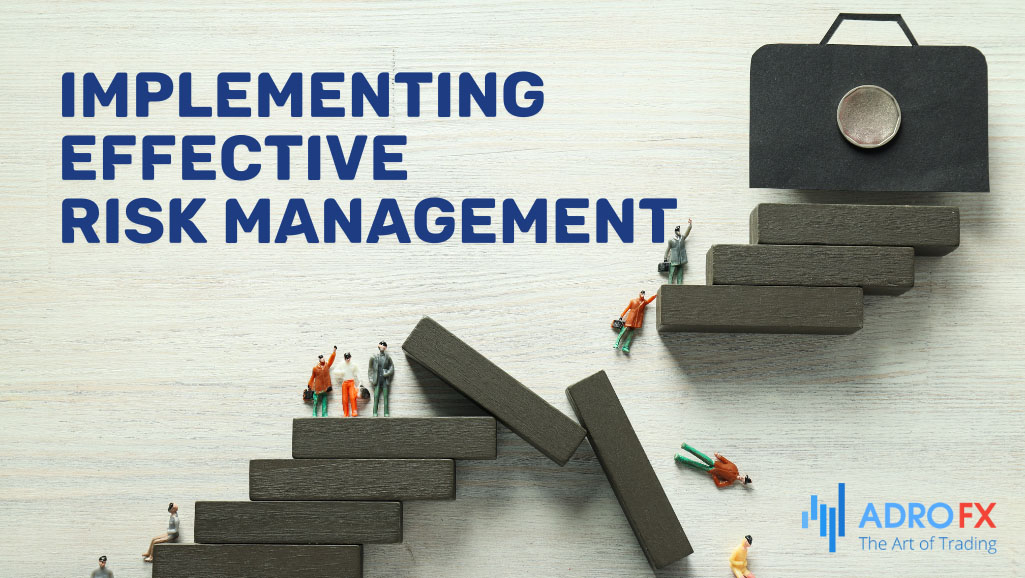Price Action Mastery: Strategies and Risk Mitigation in Forex

Embarking on a journey to become a proficient trader in the forex market presents a significant challenge. Many novice traders mistakenly believe that professional traders possess insider knowledge, giving them an edge in consistently profiting from the market. However, upon closer examination of successful traders, it becomes evident that they rely on straightforward trading strategies rather than insider information.
The forex market's dynamic nature renders it unpredictable, with no one able to forecast asset price movements with absolute certainty. Even the most influential figures, such as the President of the United States, cannot manipulate asset prices over extended periods. It defies logic to assume that simple statements can significantly alter a country's economic performance.
Professional forex traders gravitate towards this market precisely because it is immune to manipulations. Mastering complex strategies is unnecessary to thrive as a trader. Instead, focusing on mastering the basics of market analysis – technical, fundamental, and sentiment analysis – provides the foundation for successful trading. While some may advocate for indicator-based strategies, they often prove futile. Embracing a price action trading system allows traders to execute high-quality trades with tight risk management.
Price Action Trading, What Is It?
Price action trading stands as a preferred methodology among traders for analyzing and making trading decisions based solely on the movements of an asset's price. Unlike relying on indicators or technical tools, this approach prioritizes historical price data, notably Japanese candlestick patterns and chart formations. By interpreting the psychology embedded within market movements, traders anticipate forthcoming price dynamics.
Price action traders typically delve into concepts such as trend analysis, support and resistance levels, breakouts, and price patterns such as pin bars, engulfing patterns, and inside bars. Their goal is to pinpoint areas where buying or selling pressure may intensify, paving the way for profitable trading opportunities.
A significant advantage of price action trading lies in its simplicity and adaptability. Since it hinges solely on price movements, traders avoid cluttering their charts with multiple indicators, thereby facilitating a clearer interpretation of market dynamics. Furthermore, price action strategies are versatile and applicable across various financial markets, including stocks, forex, commodities, and cryptocurrencies. Ultimately, price action trading equips traders with the tools to gain a deeper comprehension of market behavior, enabling them to make well-informed trading decisions grounded in objective observations of price movements.

Trading Pin Bars with Precision
Trading with pin bars is a favored strategy among price action traders due to its clarity in signaling potential trend reversals or continuations. Pin bars, characterized by their long wicks and small bodies, indicate price rejection at specific levels, suggesting a temporary imbalance between buyers and sellers. Traders engage in a systematic approach when trading pin bars, beginning with identifying them on price charts. A bullish pin bar forms when the price initially drops but then rebounds to close near or above the opening price, while a bearish pin bar occurs when the price rises but then retreats to close near or below the opening price. Confirmation from other factors, such as their location within the overall price structure or confluence with other price action signals, is sought before entering a trade. Traders typically enter a trade on the next candle following the pin bar, setting Stop Loss levels to manage risk and profit targets based on various factors like support or resistance levels. Effective risk management is integral when trading with pin bars, ensuring appropriate position sizes relative to account size and risk tolerance, and adhering to proper risk-reward ratios to optimize gains while minimizing losses.
Trading Major Chart Patterns with Confidence
Trading major chart patterns is fundamental to technical analysis, providing insights into potential trend reversals or continuations. These patterns, including head and shoulders, double tops and bottoms, triangles, and flags, visually represent market sentiment and price action. Traders begin by identifying these patterns on price charts, recognizing their specific criteria and characteristics to confirm validity. Confirmation from other technical indicators or price action signals enhances the likelihood of a successful trade. Entry into a trade typically occurs after the pattern is confirmed, with traders often waiting for a breakout or breakdown from the pattern's boundaries. Profit targets are determined based on various technical factors, while risk management remains crucial to protect against potential losses. This involves ensuring appropriate position sizes, using Stop Loss orders to exit losing trades promptly and considering portfolio diversification to mitigate risks associated with individual trades. By mastering the art of trading major chart patterns and integrating them into a comprehensive trading strategy, traders can potentially identify high-probability trading opportunities and effectively capitalize on market trends. However, it's essential to recognize that no trading strategy guarantees success, emphasizing the importance of thorough analysis and disciplined risk management for consistent profitability.

Implementing Effective Risk Management in Price Action Trading
Ensuring effective risk management is paramount in price action trading to safeguard capital and mitigate losses. Traders must integrate various principles into their trading strategy to enhance overall profitability and achieve long-term success in the financial markets. Here's how traders can seamlessly incorporate risk management principles into their price action trading strategy:
- Optimal Position Sizing
Determining the appropriate position size for each trade is crucial in risk management. Traders should calculate the position size based on factors such as their account size, risk tolerance, and the distance between the entry point and the Stop Loss level. By adhering to proper position sizing techniques, traders can mitigate the potential impact of losing trades on their overall portfolio.
- Strategic Setting of Stop Losses
Placing Stop Loss orders strategically is essential to mitigate losses and protect capital in price action trading. These orders should be positioned at levels aligning with key support or resistance levels, recent swing highs or lows, or other technical indicators. Setting Stop Losses enables traders to define their risk per trade and exit positions promptly if the market moves against them.
- Maintaining a Favorable Risk-Reward Ratio
Maintaining a favorable risk-reward ratio is integral to risk management in price action trading. Traders should aim for a risk-reward ratio that ensures the potential for profits outweighs potential losses. For instance, a risk-reward ratio of 1:2 implies that for every dollar risked, the trader aims to make two dollars in profit. Seeking trades with favorable risk-reward ratios enables traders to improve their overall profitability and withstand periods of losses.
- Adaptation to Market Conditions
Price action traders should remain flexible and adaptive in response to changing market conditions. Factors such as market volatility, liquidity, and other variables can influence the effectiveness of price action patterns and signals. During periods of heightened volatility or choppy price action, traders may choose to adjust position sizes or tighten Stop Loss levels to account for increased market uncertainty.
- Portfolio Diversification
Diversifying trading strategies and asset classes can help spread risk and reduce exposure to any single trade or market. Price action traders may consider diversifying their portfolios by trading a mix of currency pairs, commodities, stocks, or indices. Diversification also aids in smoothing out equity curves and mitigating the impact of individual trade losses on overall portfolio performance.
- Continuous Monitoring and Evaluation
Regularly monitoring trades and assessing their performance is essential for refining risk management strategies over time. Traders should routinely review their trading journal, analyze past trades, and identify areas for improvement. By learning from both successful and unsuccessful trades, traders can fine-tune their risk management approach and enhance their overall trading performance.
By incorporating these risk management principles into their price action trading strategy, traders can effectively protect their capital, preserve profitability, and achieve long-term success in the financial markets. It's crucial to remember that disciplined risk management serves as the cornerstone of successful trading and should never be overlooked.
Conclusion
Mastering price action trading requires a comprehensive understanding of trading strategies and disciplined risk management. By embracing simplicity, clarity, and adaptability, traders can navigate the dynamic landscape of the forex market with confidence and achieve consistent profitability over time. Remember, disciplined risk management is the bedrock of successful trading and should never be overlooked.
About AdroFx
Established in 2018, AdroFx is known for its high technology and its ability to deliver high-quality brokerage services in more than 200 countries around the world. AdroFx makes every effort to keep its customers satisfied and to meet all the trading needs of any trader. With the five types of trading accounts, we have all it takes to fit any traders` needs and styles. The company provides access to 115+ trading instruments, including currencies, metals, stocks, and cryptocurrencies, which make it possible to make the most out of trading on the financial markets. Considering all the above, AdroFx is the perfect variant for anyone who doesn't settle for less than the best.










